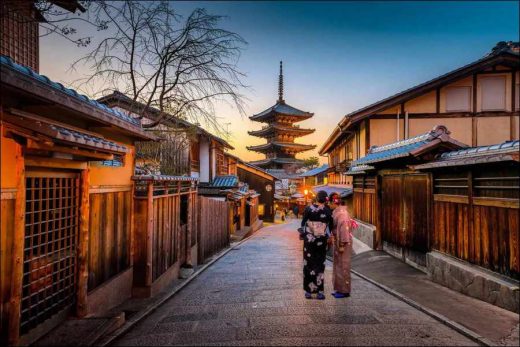All about Japanese culture. Information about Japan, a unique country with its culture, traditions, architecture and contributions to the modern world! Come on, let’s look at it together.
Japan is an island country located in the northwest Pacific Ocean. This country, which has become one of the most economically and technologically advanced societies in the world since the 1950s after the Second World War, is known as one of the unique countries of the world in this respect.
In Japan, which has developed many of the world’s modern tools and technologies, families continue to pass down the skills and techniques of long-practiced crafts through generations. This relationship between past and future has become a globally recognized feature of Japanese culture and society.
In daily life in Japan, religion is rarely discussed, separate from the state, but most people engage in religious rituals at birth, marriage, and death, and participate in spiritual matsuri (or festivals) throughout the year. Moral codes, a blend of ideas from Shintoism and Buddhism, replace religion in Japan. Japanese social and cultural values dominate daily life.
Sakura, or cherry blossom, is very important for Japanese culture. Blooming for only two weeks throughout the year, Sakura symbolizes rebirth, mortality and magnificence. Sakura festivals turn into a magnificent visual feast for tourists.
Although the Samurai, a military class, no longer exists, traces of the samurai heritage, which is deeply evident in Japanese culture, can still be seen in Japanese architecture. The basis of samurai behavior is bushido, “the way of the warrior.” This unique philosophy valued honor, reckless courage, and self-sacrifice, as well as the warrior’s duty to his lord to give up one’s life and embrace death. There was no room for fear on the warrior’s path, and this self-discipline and respectful, ethical behavior would become role model behavior for other classes throughout Japan’s history.
In Japan, there has been a tradition of removing shoes when entering buildings since ancient times, but the use of slippers only dates back to the 1950s. In Western-style hotels, it is common to enter the guest room with shoes, and it is also common to have slippers. It is not uncommon to see businessmen bargaining in suits that match slippers.
Once almost completely unknown in the world outside Japan, manga (Japanese comics) and anime (Japanese animation) have become a global phenomenon and their popularity is increasing day by day. In Japan, people of both genders and all ages read manga. Today’s manga can be defined as comic books corresponding to the Japanese style, which appeared in the mid-1900s.
Careful preparation and meticulous presentation are important elements of Japanese cuisine. Cooking is an art, and even the simplest dishes are often prepared by chefs who have trained for many years. Many towns and cities in Japan; It is known above all for its local specialties, whether it be desserts or foods such as fish, noodles, seaweed or tofu.
Views: 496




